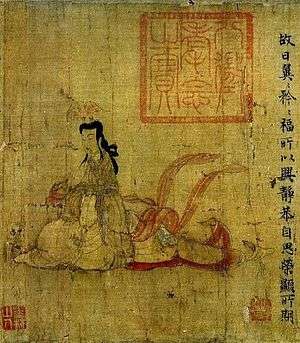Self-reflection


Human self-reflection is the capacity of humans to exercise introspection and the willingness to learn more about their fundamental nature, purpose and essence. The earliest historical records demonstrate the great interest which humanity has had in itself.
Human self-reflection is related to the philosophy of consciousness, the topic of awareness, consciousness in general and the philosophy of mind.
History
Prehistoric times
Prehistoric notions about the status of humanity may be guessed by the etymology of ancient words for man. Latin homo (PIE *dʰǵʰm̥mō) means "of the earth, earthling," probably in opposition to "celestial" beings. Greek ἂνθρωπος (mycenaean *anthropos) means "low-eyed," again probably contrasting with a divine perspective.
Ancient Orient
From the 3rd millennium Old Kingdom of Egypt, belief in the eternal afterlife of the human Ka is documented. From the earliest times, man made out a claim of dominance of humanity alongside radical pessimism because of the frailty and brevity of human life (In the Hebrew Bible, for example, dominion of man is promised in Genesis 1:28, but the author of Ecclesiastes bewails the vanity of all human effort).
Classical antiquity
Protagoras made the famous claim that "Man is the measure of all things; of what is, that it is; of what is not, that it is not". Socrates advocated for all humans to "know thyself," and gave the (doubtlessly tongue-in-cheek) definition of humans as "featherless bipeds" (Plato, Politicus). More serious is Aristotle's description of man as the "communal animal" (ζῶον πολιτικόν), i.e., emphasizing society-building as a central trait of human nature, and "thought bearer animal" (ζῶον λόγον ἔχον, animal rationale) , a term that also inspired the species' taxonomy, Homo sapiens.
Middle Ages
The dominant world-view of medieval Europe, as directed by the Catholic Church, was that human existence is essentially good and created in "original grace," but because of concupiscence, is marred by sin, and that its aim should be to focus on the beatific vision after death. The 13th century pope Innocent III wrote about the essential misery of earthly existence in his "On the misery of the human condition" – a view that was disputed by, for example, Gianozzo Manetti in his treatise "On human dignity."
Renaissance
- See Renaissance humanism.
A famous quote of Shakespeare's Hamlet (II, ii, 115-117), expressing the contrast of human physical beauty, intellectual faculty, and ephemeral nature:
- What a piece of work is a man! How noble in reason! how infinite in faculties! in form and moving, how express and admirable! in action how like an angel! in apprehension, how like a god! the beauty of the world! the paragon of animals! And yet, to me, what is this quintessence of dust?
René Descartes famously and succinctly proposed: Cogito ergo sum[2] (French: "Je pense donc je suis"; English: "I think, therefore I am")[3]
Modern era
The Enlightenment was driven by a renewed conviction, that, in the words of Immanuel Kant, "Man is distinguished above all animals by his self-consciousness, by which he is a 'rational animal'." In the 19th century, Karl Marx defined man as "labouring animal" (animal laborans) in conscious opposition to this tradition. In the early 20th century, Sigmund Freud dealt a serious blow to positivism by postulating that human behaviour is to a large part controlled by the unconscious mind.
Comparison to other species
Various attempts have been made to identify a single behavioural characteristic that distinguishes humans from all other animals. Many anthropologists think that readily observable characteristics (tool-making and language) are based on less easily observable mental processes that might be unique among humans: the ability to think symbolically, in the abstract or logically, although several species have demonstrated some abilities in these areas. Nor is it clear at what point exactly in human evolution these traits became prevalent. They may not be restricted to the species Homo sapiens, as the extinct species of the Homo genus (e.g. Homo neanderthalensis, Homo erectus) are believed to also have been adept tool makers and may also have had linguistic skills.
In learning environments reflection is an important part of the loop to go through in order to maximise the utility of having experiences. Rather than moving on to the next 'task' we can review the process and outcome of the task and - with the benefit of a little distance (lapsed time) we can reconsider what the value of experience might be for us and for the context of which it was a part.
See also
- Anthropocentrism
- Awareness
- Consciousness
- Psychological mindedness
- Philosophy of mind
- Wisdom#Confucianism: Reflection • Imitation • Experience
References
- ↑ McCausland, Shane (2003), First Masterpiece of Chinese Painting: The Admonitions Scroll, British Museum Press, p. 78, ISBN 978-0-7141-2417-9
- ↑ Descartes, René; Principia Philosophiae (1644), Part 1, article 7:"Ac proinde hæc cognitio, ego cogito, ergo sum, est omnium prima & certissima, quæ cuilibet ordine philosophanti occurrat."
- ↑ translated, René Descartes ;; notes, with explanatory; Miller, by Valentine Rodger; Miller, Reese P. (1983). Principles of philosophy (Repr., with corrections. ed.). Dordrecht: Reidel. ISBN 90-277-1451-7.